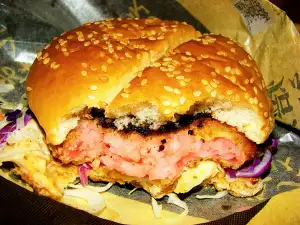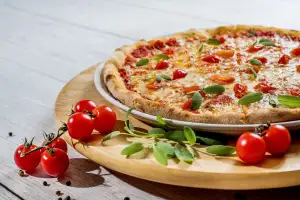Spice up Your Kitchen with our Homemade Curry Paste Recipe!

Curry paste is a versatile and aromatic blend of spices that adds depth and flavor to any dish. It is a staple in many cuisines, including Indian, Thai, and Malaysian. While store-bought curry pastes are readily available, making your own at home allows you to customize the flavors and ensure the use of fresh ingredients. In this article, we will share an easy and delicious homemade curry paste recipe that will spice up your kitchen and elevate your culinary creations. Get ready to embark on a flavorful journey!
Ingredients required for making curry paste
To make your own homemade curry paste, you will need a variety of aromatic ingredients that will add depth and flavor to your dishes. Here are the essential ingredients required:
1. Fresh Red Chilies: These provide the heat and spice in the curry paste. Use around 8-10 red chilies, depending on your preferred level of spiciness.
2. Shallots: Shallots add a sweet and mild onion flavor to the paste. You will need about 4-5 shallots, finely chopped.
3. Garlic: Garlic is a key ingredient for its pungent and savory taste. Use around 4-5 cloves of garlic, minced.
4. Lemongrass: Lemongrass adds a citrusy and refreshing aroma to the curry paste. Trim off the woody ends and use only the tender part, finely chopped (about 2 stalks).
5. Galangal or Ginger: Galangal is commonly used in Thai curry pastes, but ginger can be used as a substitute. Both provide a warm and slightly spicy flavor. Use about 1 thumb-sized piece, peeled and minced.
6. Kaffir Lime Leaves: These leaves have a distinct citrus fragrance that enhances the overall flavor of the curry paste. Use around 4-5 leaves, finely shredded.
7. Coriander Roots or Cilantro Stems: The roots or stems of coriander (also known as cilantro) have an intense flavor that adds depth to the paste. Use about 1 bunch, finely chopped.
8. Shrimp Paste (optional): Shrimp paste is commonly used in Southeast Asian curry pastes for its umami richness. If desired, use about 1 teaspoon of shrimp paste.
9. Spices: To give your curry paste its characteristic aroma and warmth, you will need ground spices such as cumin seeds (1 teaspoon), coriander seeds (1 teaspoon), and turmeric powder (1/2 teaspoon).
10. Salt: Add salt to taste, usually about 1-2 teaspoons.
Remember, these ingredients can be adjusted according to your personal preferences. Experiment with the quantities to find the perfect balance of flavors for your homemade curry paste.
Step-by-step instructions for preparing curry paste
Step 2: Step-by-step instructions for preparing curry paste
1. Begin by gathering all the necessary ingredients for making your homemade curry paste. You will need:
- 4-6 dried red chilies (adjust according to your spice preference)
- 2 tablespoons coriander seeds
- 1 tablespoon cumin seeds
- 1 teaspoon black peppercorns
- 1 teaspoon turmeric powder
- 4 cloves garlic, peeled
- 2 shallots, peeled and roughly chopped
- 1 stalk lemongrass, tough outer layers removed and sliced
- 1 thumb-sized piece of ginger, peeled and roughly chopped
- 1 tablespoon shrimp paste (optional)
2. Heat a dry skillet over medium heat and add the dried red chilies, coriander seeds, cumin seeds, and black peppercorns. Toast them for a few minutes until fragrant, stirring occasionally to prevent burning.
3. Transfer the toasted spices to a mortar and pestle or a spice grinder. Grind them into a fine powder.
4. Add the turmeric powder, garlic cloves, shallots, lemongrass, ginger, and shrimp paste (if using) to the ground spices. Pound or blend everything together until you have a smooth paste.
5. If needed, you can add a little water to help with the blending process.
6. Once you have achieved a smooth consistency, your homemade curry paste is ready to be used in various dishes.
7. Remember that this recipe yields approximately half a cup of curry paste. You can store any leftovers in an airtight container in the refrigerator for up to two weeks or freeze it for longer shelf life.
Now that you have mastered the art of making your own curry paste from scratch, get ready to infuse your kitchen with incredible flavors!
Tips and variations for enhancing the flavor of curry paste
To enhance the flavor of your homemade curry paste, here are some tips and variations you can try:
1. Toast the spices: Before grinding the spices for your curry paste, toast them in a dry pan over low heat. This will help release their natural oils and intensify their flavors.
2. Experiment with different spices: While traditional curry paste recipes call for ingredients like coriander, cumin, turmeric, and chili peppers, don't be afraid to add your own twist. Try adding cardamom, fenugreek, or even cinnamon to create unique flavor profiles.
3. Add fresh herbs: To brighten up the taste of your curry paste, consider adding fresh herbs like cilantro or mint. These herbs not only add freshness but also provide a vibrant color to your paste.
4. Include citrus zest: For a zesty kick, grate some lemon or lime zest into your curry paste. The citrusy aroma will add depth and brightness to the overall flavor.
5. Adjust the heat level: If you prefer a milder curry paste, reduce the amount of chili peppers or remove the seeds before grinding them. On the other hand, if you love spice, feel free to increase the quantity or use hotter varieties of chili peppers.
6. Use high-quality ingredients: The quality of your ingredients greatly impacts the final taste of your curry paste. Opt for fresh and organic spices whenever possible to achieve a more robust and authentic flavor.
By experimenting with these tips and variations, you can customize your homemade curry paste according to your taste preferences and create exciting new flavors in your dishes!
Storage and shelf life of homemade curry paste
Once you have made your delicious homemade curry paste, it is important to store it properly to maintain its freshness and flavor. The best way to store curry paste is by transferring it into an airtight container or jar. Make sure the container is clean and dry before adding the paste.
When stored in the refrigerator, homemade curry paste can last for up to 2 weeks. However, if you want to extend its shelf life, you can freeze it. Freezing curry paste will help preserve its taste and aroma for up to 3 months.
To freeze curry paste, divide it into small portions that you would typically use in a single recipe. Place each portion in a freezer-safe container or ziplock bag, removing any excess air before sealing. Label each container with the date and type of curry paste for easy identification.
When ready to use frozen curry paste, simply thaw it in the refrigerator overnight or defrost it using the defrost setting on your microwave. Avoid refreezing thawed curry paste as this can affect its quality.
Remember to always check for any signs of spoilage such as mold or off odors before using stored curry paste. If you notice any changes in color or texture, it's best to discard it.
By following these storage guidelines, you can enjoy your homemade curry paste for an extended period, ensuring that every dish you create bursts with authentic flavors.
Creative ways to use curry paste in various dishes
1. Curry Soup: Add a spoonful of homemade curry paste to your favorite soup recipe for an extra kick of flavor. Whether it's a vegetable soup or a creamy coconut-based soup, the curry paste will add depth and complexity to the dish.
2. Stir-Fries: Use curry paste as a base for stir-fries by sautéing it with vegetables, protein (such as chicken, shrimp, or tofu), and your choice of noodles or rice. The aromatic spices in the paste will infuse the entire dish with their rich flavors.
3. Marinades: Mix curry paste with yogurt or coconut milk to create a flavorful marinade for meats, seafood, or even vegetables. Let them marinate for at least 30 minutes before grilling or baking for a deliciously spiced and tender result.
4. Dips and Spreads: Blend curry paste with Greek yogurt or cream cheese to make a tangy dip or spread for crackers, breads, or vegetable sticks. It's an excellent way to add some excitement to your party platters.
5. Salad Dressings: Whisk together curry paste with olive oil, lemon juice, honey, and salt to create a unique and zesty salad dressing. Drizzle it over mixed greens, roasted vegetables, or grilled chicken for an exotic twist on traditional salads.
6. Roasted Vegetables: Toss your favorite vegetables in a mixture of olive oil and curry paste before roasting them in the oven. The heat will intensify the flavors of the spices while caramelizing the veggies beautifully.
7. Grilled Skewers: Thread marinated meat chunks or vegetables onto skewers and grill them until cooked through. Brushing them with a mixture of melted butter and curry paste during grilling will give them an irresistible smoky flavor.
By incorporating homemade curry paste into these creative dishes, you can elevate your culinary creations to new heights. Experiment with different combinations and enjoy the versatility and depth of flavor that curry paste brings to your kitchen.
In conclusion, making curry paste at home is a rewarding and flavorful experience. By using fresh ingredients and following the step-by-step instructions, you can create a versatile and aromatic paste that will elevate your dishes to new heights. The homemade curry paste allows you to customize the flavors according to your preference, giving you full control over the spice level and intensity. Additionally, it is a healthier alternative to store-bought options as it contains no preservatives or additives. So why not add some excitement to your kitchen by trying our homemade curry paste recipe? Your taste buds will thank you!
Published: 18. 02. 2024
Category: Recipes



